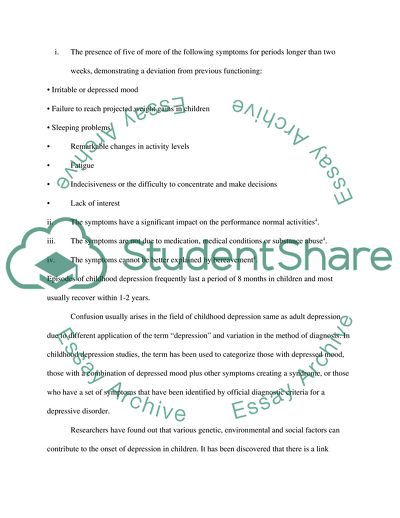Cite this document
(Childhood Depression Disorder Research Proposal Example | Topics and Well Written Essays - 2250 words - 3, n.d.)
Childhood Depression Disorder Research Proposal Example | Topics and Well Written Essays - 2250 words - 3. https://studentshare.org/psychology/1812093-research-proposal
Childhood Depression Disorder Research Proposal Example | Topics and Well Written Essays - 2250 words - 3. https://studentshare.org/psychology/1812093-research-proposal
(Childhood Depression Disorder Research Proposal Example | Topics and Well Written Essays - 2250 Words - 3)
Childhood Depression Disorder Research Proposal Example | Topics and Well Written Essays - 2250 Words - 3. https://studentshare.org/psychology/1812093-research-proposal.
Childhood Depression Disorder Research Proposal Example | Topics and Well Written Essays - 2250 Words - 3. https://studentshare.org/psychology/1812093-research-proposal.
“Childhood Depression Disorder Research Proposal Example | Topics and Well Written Essays - 2250 Words - 3”. https://studentshare.org/psychology/1812093-research-proposal.


